- Home
- H. R. F. Keating
Murder Must Appetize
Murder Must Appetize Read online
H. R. F. KEATING
Murder Must Appetize
Contents
Chapter 1
Is there anything, when life gets a little much, as comforting as a detective story? Well yes, of course there is. Drink. The love of a good woman. The attentions of a bad woman. Yet for many of us the quintessential detective story does have a warm inward spreading cosiness that can expel any number of everyday horrors. It is worth asking just how these curious concoctions come to have such magical powers.
But first, what is the quintessential ’tec? For me, it should come more or less from the half-decade leading up to World War II. Perhaps this is only because this was when I first began to read—no, gobble—the genre. The scent of those first fine careless rootlings, rising again, fills my head with old, forgotten, far-off things and murders long ago. It is that heads-you-win, tails-you-win nostalgic feeling either for times that were good and cannot by anything ever be taken away from us or for times that were bad and have been gone through and successfully come out of. Yet perhaps there are good reasons for the delightfulness of that generation of what are nowadays called crime books.
Reflections on a golden age
Learned critics—and even crime fiction has its sprinkling of these—begin the golden age of the detective story a good deal earlier than my chosen heyday. They argue that the form came to its full characteristic growth about 1920 with as a culminating point the foundation in 1928 of the Detection Club, a solemnly elected body of masters, a sort of dining Académie Policière, which when it drew up rules in 1932, stated firmly, ‘it is a demerit in the detective novel if the author does not “play fair”.’ But even in the most 24-carat time of the golden age, its rules were broken, and by its most successful practitioners.
As early as 1926 Agatha Christie wrote The Murder of Roger Ackroyd, the one where—I don’t care if I am giving it away—the Watson done it. And Dorothy Sayers, co-queen of that golden reign, was equally busy infringing her own edicts, first declaring that a love interest was quite unacceptable and then in 1930 going so unutterably far as to let her detective, the all-solving Lord Peter Wimsey, fall in love with the chief suspect. But this was only the crowning moment of a process she had long been allowing to creep onwards, the head of the worm i’ the bud.
What she was doing was to let people, recognizably real people, play havoc with the purity of the puzzle. And a splendid thing that was. When you can get people into those conjurings-up of imaginary worlds that are works of fiction, you get things that have a life of their own. And these were what we loved. Books that first declared their limitations by announcing themselves as detective stories, thus promising the exclusion of certain aspects of existence, but then surprised us with lifelike life to mull over deliciously on our long country walks. Well, that’s what we did in those distant days.
The emergence of the appetizing murder
Take Miss Sayers’ Murder Must Advertise, in many ways the pattern of all we hoped for from the treasure trove we lugged away on our weekly visits to W. H. Smith’s or Boots’ Libraries (the public library was regarded as a little bit ‘common’, essence of the thirties word). It came out in February 1933 and was reprinted again in that June and again in a cheap edition in January 1934 and by July 1939 had reached its tenth impression (two shilling edition). Dorothy L.
Sayers was hailed by many as the finest detective-story writer of the century, treated by the newspapers as an absolute oracle and finally stepped into the successive shoes of G. K. Chesterton and Edmund Clerihew Bentley, author of Trent’s Last Case, as President of the Detection Club.
I imagine that what most of us who remember Murder Must Advertise recall is its setting of the agency into which Lord Peter was planted as a temporary copywriter to investigate the mysterious death of his predecessor. But there is, in fact, a second substantial strand to the book, a highly romantic to-do over drug smuggling with Lord Peter, mostly dressed as a harlequin, dashing about a lot in a powerful car. It is odd how the whole drugs business appears in the light literature of the twenties and thirties, looked at from the standpoint of today. Then it was cocaine that was smuggled rather than heroin, though of course the two are equally destructive and addictive. Yet the detective-story writers let their major characters take to ‘coke’ and kick it with little apparent effect. Only vignette baddies were allowed to perish from it. The phenomenon begins as early as the great hypodermic fetishist, Sherlock himself. There was never a sign there of nausea and imaginary ants crawling beneath the skin when suddenly the game was afoot. And, equally, the lady who ‘doped’ in Murder Must Advertise, the notorious Dian de Momerie, never seemed more the worse for wear than would be accounted for by prolonged ‘ginning it up’, and she ended her short life decently murdered.
Miss Sayers drew an explicit parallel in the book between this unlikely tosh-bosh and her much more convincing advertising world, and she said in a piece she wrote in 1937 that the whole thing had been intended as ‘a criticism of life’.
Reading it again today, one sees what she meant. But, truth to tell, although the material is there in the shape of occasional swoops into solemn discussion sessions on advertising ethics and fine old rhetorical montages of questionable slogans, somehow the criticism does not really happen. You are not left, as you are with your top novelists and even with the best of the crime writers of today, with a sense of something said coming from every event, every facet of character, every phrase of description. But, on the other hand, you do get a highly entertaining story, indeed an appetizing one, that scurries you along by the pull of its puzzle while giving you telling sketches of true-life people and of the way they lived at least in their open hours.
All this and Lord Peter Wimsey too. His Lordship was no doubt a great attraction, though looking back analytically I am not sure that the highly characterised detective—your Wimsey, your Poirot, your Mr Campion—was the true nub of the delight. Certainly such a figure was more or less a necessity, and they existed in great variety from Wimsey, appealing simultaneously to the snob within and to the inner little man who finally turns the tables (alas, more often in imagination than in reality), to figures hardly rising above the general dullish level of their authors’ other characters yet still designed to hold a following. But the hero-detective then was, I think, more in the nature of a brand label than something appreciated solely for himself. With a St Michael sign on the book you knew you would get Marks and Spencer quality through and through.
Life in the not so raw
What in retrospect looms larger than the detective in these thirties stories is the Background, that setting which, avid all the while to find out who had done it, we absorbed painlessly and joyously. But the back ground was not so much the details of advertising practice or bellringing nomenclature or riding the Orient Express or vicarage, hospital or Oxford life or the ins-and-outs of a Mayfair fashion-house, of which the facts at least are all quickly forgettable; no, it was the people in their settings.
Yet it was not the whole of each person either. In Murder Must Advertise the character of the tormented Tallboy (you never get to know his Christian name: that’s the way it was in them thar days) is well enough drawn and has been praised in print. He is lifelike all right, ready to go with a flighty bit while his wife is having the baby, proud and ashamed of Dumbleton, his second-rate public school, but he is never a deathless creation. Oh, but Dumbleton! What a clue that made-up place-name provides to Miss Sayers’ snobbery and to ours then. And how it takes one back to those good old class-conscious days. We are told that the class system still flourishes, and maybe it does. But we have really emerged from the era when a writer could let her characters seriously discuss, as Miss Sayers unblushingly does and
as more than one other detective story practitioner did too, just to what extent one of them was ‘not quite a gentleman’ and what he could possibly do about the stigma.
But, re-reading Tallboy today, we recognize that if we ever supposed he was one of the unforgettable creatures of a writer’s imagination, he just is not. Nor did we ever want him to be. What we wanted was a certain happy crudity in our pictures. We wanted them to be vivid, as vivid as could be got. And we wanted them to be lifelike, but not as lifelike as could be got. Life had, and has, some very uncomfortable chunks in it.
The tunnel of death revisited
Perhaps to make clearer what these books did for us we should look at one of the ones which, though published during our chosen period, really dated from the earlier era. Things are never as cut-and-dried as, in kindness to the meticulous literary historian, they ought to be. However, my curiosity aroused about just what it was I had loved, I disinterred from the shelves of the London Library a handful of run-of-the-mill thirties whodunits acquired in the days when that excellent institution had more about it of the gentleman’s club than the scholar’s reference machine. Among them was Death in the Tunnel by Miles Burton.
A railway timetable mystery this, a pure puzzle like many that continued to be written well into the age of the book with a background, in much the same way as today you can find all new and fresh published genuine examples of the background-only crime story as it came once from the pen of Miss Dorothy L. (she was always, those who knew her tell me, very hot on the ‘L’) Sayers. And nice these often are too. Mr Burton’s plot concerns a devilishly ingenious murder committed (and once more I don’t care if I am giving it away) by halting a train in which the victim has just been shot by means of a red light dangled down the ventilation shaft of a tunnel on the end of ‘an electric flexible’ and then hauling up the murderer. There’s cunning for you. But not enough to fool the patient, prolix and not very characterful Desmond Merrion, ‘something of an amateur criminologist’.
And the book, like its detective, is, truth to tell, fairly high on dullness. How about this for a snappy start? ‘The 5.0 p.m. train from Cannon Street runs fast as far as Stourford, where it is due at 6.7. On Thursday, November 14th, it was, as usual, fairly full, but not uncomfortably so.’ Just look at all those helpful commas to guide us through the thickety prose.
For many a page the murder is dutifully supposed to be suicide. Although the victim is a bachelor of sixty, it is only in one hurried aside of ‘no entanglements with women or anything like that’ that the possibility is hinted at of his having killed himself because of an unconventional sex life, a suggestion which almost every crime writer of today would feel bound to pursue, often at length. When eventually Mr Burton does establish that there is a murder to investigate we set off on a round of suspects and witnesses, meeting the doctor who ‘proved to be an elderly man of benevolent aspect’ and some forty pages later a farmer, an elderly man of—guess what— ‘benevolent aspect’. And at long last the mystery is solved (not without an acid marginal comment from some London Library reader of ‘Improbable!’) and the villains are arrested. ‘They were duly hanged,’ come the final words. Or, to quote from the last page of a similar opus, Death at Breakfast by John Rhode, ‘He was tried for the murder of Victor Harleston, sentenced and executed.’ We liked all the ends tied up, you see. But, to make assurance doubly sure, both books add those two words scarcely ever absent indeed from any of the products of that age, ‘The End’.
‘The atmosphere in the little room was electric’
Well, I suspect that if I ever did read Death in the Tunnel I was a little disappointed. We recognised that there could be comparative duds in our Boots’ Library treasure hauls. Yet even such a misfire had in it some of the ingredients we considered essential to our proper pleasure in the sort of book we really wanted. There was, first, the central detective, the figure, however improbable, who worked to convince us down there in the depths of our minds that we poor puny mortals could single-handedly smite Evil and chop it down. Usually, as here, the detective was an amateur, thus enabling us to identify with him more easily and share his hunt through the pages. But, police or amateur, he had to possess two important qualities.
He had to be omniscient (Michael Innes said casually once of his detective, John Appleby, that he ‘happened to know some Russian,’ and that in 1937). And he had to be omnipotent; to quote again from Michael Innes, Mrs Platt-Hunter-Platt speaking, ‘Exactly—a real detective. There is a very good man whose name I forget; a foreigner and very conceited—but, they say, thoroughly reliable.’ Mr Innes was joking, but good jokes spring from exact reality and we really did like our Poirots to be, no higher praise, ‘thoroughly reliable’.
Death in the Tunnel had, too, a good selection of suspects, and the unlikely situation of each having good reason to have killed the victim. We liked when we could get it our detective to arrange his case indeed so that it ended with a Grand Confrontation of all these suspects. Technically this was necessary since all the people likely to have done the murder had to be kept in play as long as possible. If in any detective story worth its salt a suspect was eliminated early on this simply meant that they were to be flung into the boiling again at a later stage to give off clouds of yet blacker suspiciousness at the final denouement when, to quote the typical Cyril Hare of Death Is No Sportsman (a trout fishing one), ‘The atmosphere in the little room was electric.’ And, of course, at this grand confrontation one should be delightfully yet infuriatingly aware that one’s omniscient detective has known for at least fifty pages who really has done it.
Listen to Nicholas Blake’s hero, Nigel Strange-ways: ‘Yes,’ said Nigel gravely. ‘I think I know who the murderer is. But I doubt if I can ever prove it. A question of proof—that’s a good title for a detective story, if you ever write one—and I’ve got enough proof to fill an acorn.’
I think I know what the title of that book is— A Question of Proof And I think I know, from the evidence of that nuggetty little phrase ‘not enough to fill an acorn’, who Nicholas Blake was: none other than Cecil Day-Lewis, eventually to become Poet Laureate. Yet perhaps a quote from another poet, Ogden Nash, is not exactly amiss here:
… held their knowledge aloof
Why, they say, why, Inspector, I knew all along it was
he, but
I couldn’t tell you, you would have laughed at me
unless I had absolute proof.
Crime and the Poet Laureate
But A Question of Proof is still one of the ones that, for all that it was written in 1935, can be read with considerable enjoyment today. Though only the first novel of its then impecunious author (he told me once that the idea of writing it came into his head daydreaming over the phrase ‘I’d do anything for money’), it fulfilled almost every requisite of our curious canon. Nigel Strangeways, a sort of non-playing newspaper man (thus excluded from his creator’s sharpish jibes at tasteless reporters) came with plenty of god-like wisdom and miscellaneous literary knowledge and with several omnipotently dealt-with mysteries already under his belt. And he had the near-obligatory eccentricity, a facet designed to humanise without minimising. This was a huge addiction to tea, though it turned out to be a trait that hardly paid its way and was later quietly dropped.
Then the book had a background that was just right, the life of a prep school such as the penniless poet had served his time in. Remarkably well described this is, too, with real feeling for boys en masse, nicely cari-caturised portraits of a collection of typical masters of the period (‘There are so few jobs going nowadays especially for older men’) and with a splendid climactic description of a cricket match, even if it is only between boys and fathers, which brings out character as surely as sunshine brings out the smell of mown grass.
Added to all this there is a sweeping, and still perfectly effective, whodunit tug. Who done it? Well, perhaps not precisely. It is rather the more intriguing question of ‘How on earth was it done?’ How
was the first murder committed in the hay-castle when apparently only the nice hero and the nice heroine, who is unfortunately married to the fearful old prig of a headmaster (so we know who the second victim will be), were the only ones who could have been there at what seems to be the only possible time? I think I won’t give the answer away. That tickling question should remain the tease it is until the pages are irresistibly turned.
Today there is as well an interest the author can hardly have foreseen. His accurate rendering of contemporary manners gives us a whole minefield of delicious thirties atrocities. We get all the agonies of ‘not quite a gentleman’ already encountered in Dorothy Sayers (a not wholly likeable suspect betrays under police pressure ‘a slight coarsening of accent’ and even the local, destined-to-be-foiled Inspector pounces on that like a kite). Then we have some splendid, now almost forgotten words. There is ‘bim’—how long ago it is since I heard that marvellously middle-class thinning down and respectabilising up of ‘bum’. There is ‘oick’—and alas the Leftish poet lets this pejorative description of someone not birth-endowed with middle-class mores go by without a murmur. And there is ‘bolshie’—how that summons up all affronted stolidity standing aghast at even hinted doubt over the axioms of gentlemanliness and property-owning.
But, of course, the young poet and anonymous mystery author was a bit of a bolshie himself. Julian Symons, historian of the whodunit, has written of the shock he felt, remembered years after, when he found on Page I of this book the name of T. S. Eliot (in fact, his memory betrayed him: it is on Page 2 that a quotation from ‘Prufrock’ squeals out in the thirties torpor). Possibly even more complexion-purpling was a later likening of an incident to ‘a surréaliste film’. But perhaps ruffled proprieties were restored with two words of Greek printed in their proper alphabet.

 Go West, Inspector Ghote
Go West, Inspector Ghote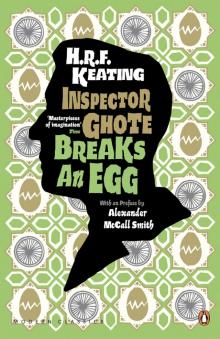 Inspector Ghote Breaks an Egg
Inspector Ghote Breaks an Egg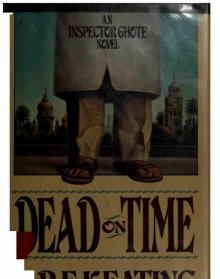 Dead on Time
Dead on Time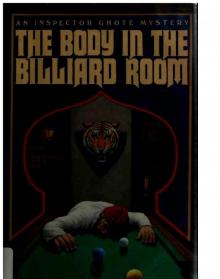 The Body in the Billiard Room
The Body in the Billiard Room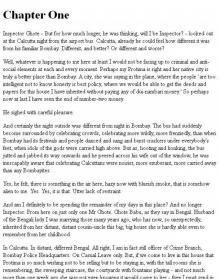 Bribery, Corruption Also
Bribery, Corruption Also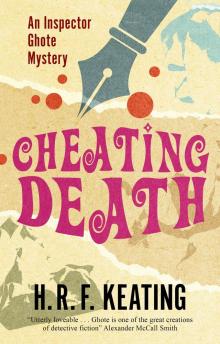 Cheating Death
Cheating Death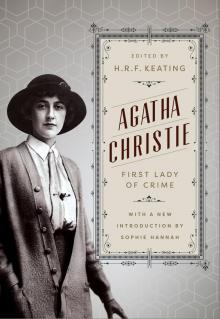 Agatha Christie
Agatha Christie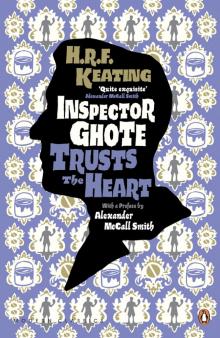 Inspector Ghote Trusts the Heart
Inspector Ghote Trusts the Heart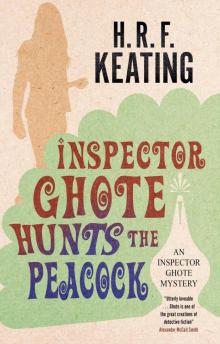 Inspector Ghote Hunts the Peacock
Inspector Ghote Hunts the Peacock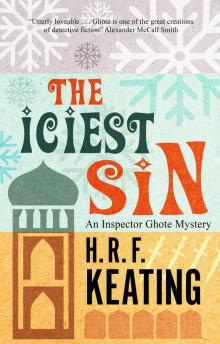 The Iciest Sin
The Iciest Sin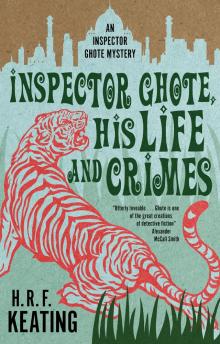 Inspector Ghote, His Life and Crimes
Inspector Ghote, His Life and Crimes Strong Man
Strong Man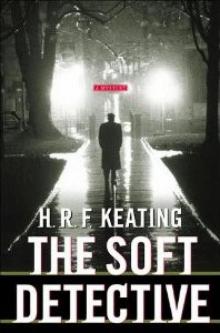 The Soft Detective
The Soft Detective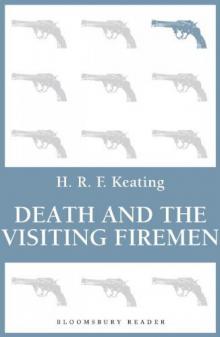 Death and the Visiting Firemen
Death and the Visiting Firemen Breaking and Entering
Breaking and Entering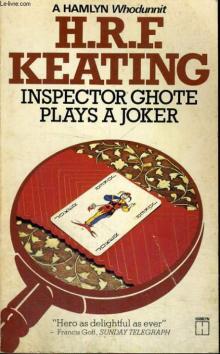 Inspector Ghote Plays a Joker
Inspector Ghote Plays a Joker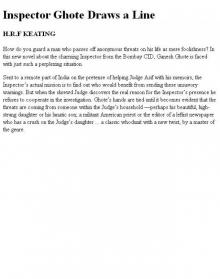 Inspector Ghote Draws a Line
Inspector Ghote Draws a Line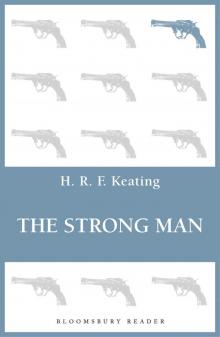 The Strong Man
The Strong Man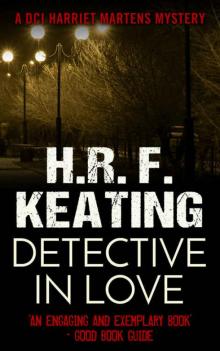 A Detective in Love (A Harriet Martens Thriller Book 2)
A Detective in Love (A Harriet Martens Thriller Book 2) The Perfect Murder: the First Inspector Ghote Mystery
The Perfect Murder: the First Inspector Ghote Mystery Inspector Ghote's Good Crusade
Inspector Ghote's Good Crusade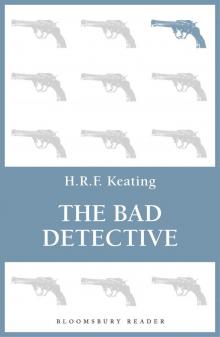 The Bad Detective
The Bad Detective The Dreaming Detective
The Dreaming Detective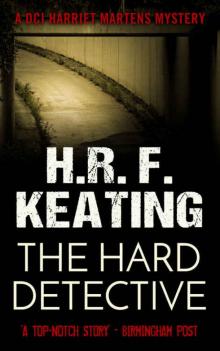 The Hard Detective (A Harriet Martens Thriller Book 1)
The Hard Detective (A Harriet Martens Thriller Book 1)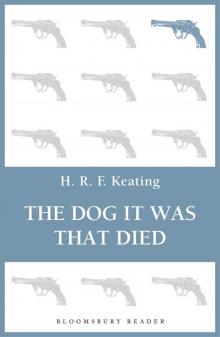 The Dog It Was That Died
The Dog It Was That Died Murder Must Appetize
Murder Must Appetize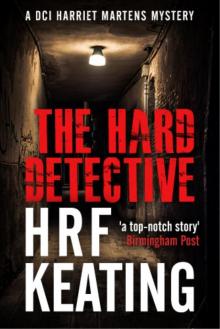 The Hard Detective
The Hard Detective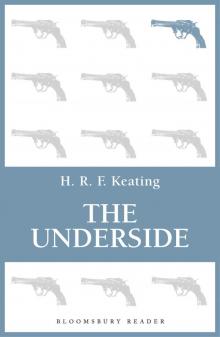 The Underside
The Underside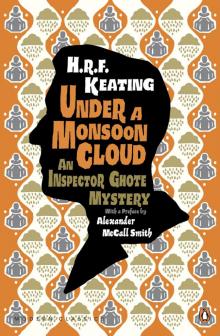 Under a Monsoon Cloud: an Inspector Ghote Mystery
Under a Monsoon Cloud: an Inspector Ghote Mystery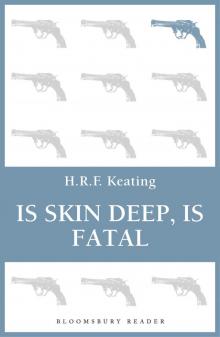 Is Skin Deep, Is Fatal
Is Skin Deep, Is Fatal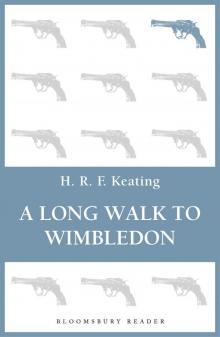 A Long Walk to Wimbledon
A Long Walk to Wimbledon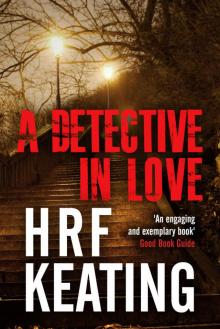 A Detective in Love
A Detective in Love A Detective at Death's Door
A Detective at Death's Door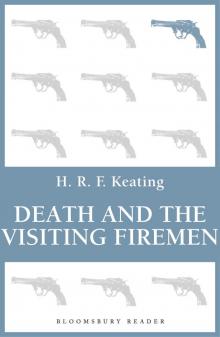 Death and the Visiting Fireman
Death and the Visiting Fireman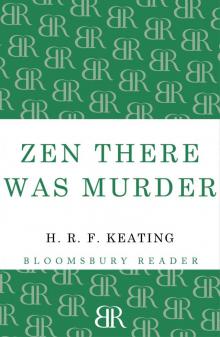 Zen there was Murder
Zen there was Murder